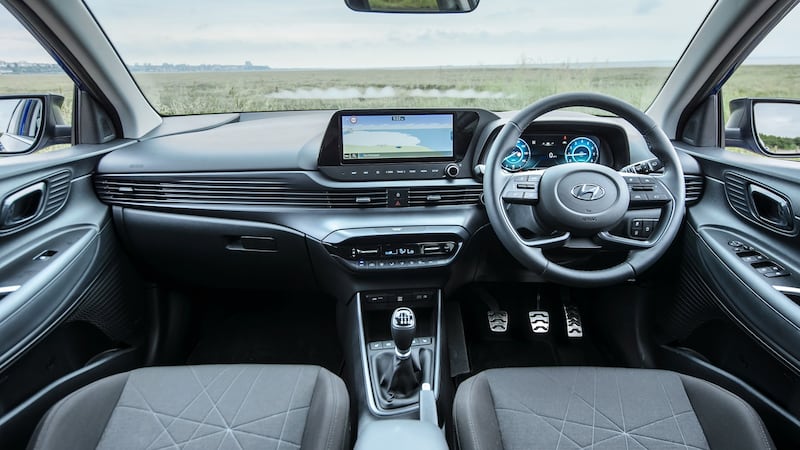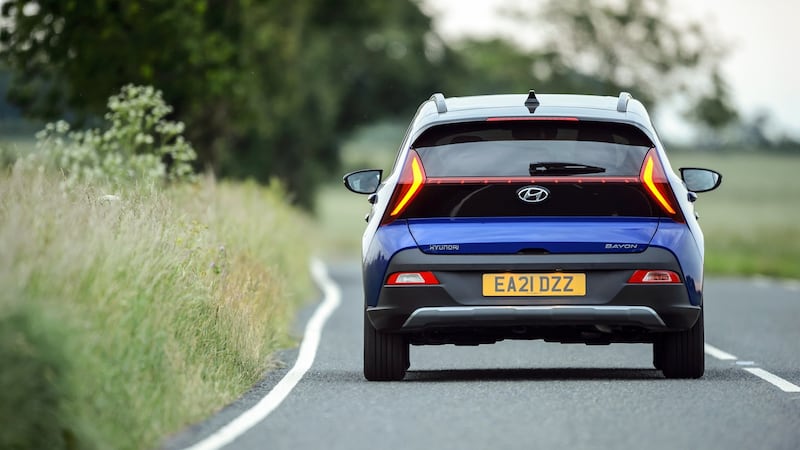Someone at Hyundai clearly spotted a chink of light in the market between its small crossover, the Kona, and its small car, the i20. It's the sort of gap normally requiring a multiphoton microscope.
Yet as part of an industry-wide effort to garner a greater amount of money from the motorist in return for minimal additional metal, the Bayon was born.
Hyundai’s marketing team refer to this small car as a crossover SUV. Admittedly they are not the only car company trotting out this claim about a small hatchback. A fleet of these little cars, sold on the back of grandiose claims, are flooding the market right now.
There were just two baby SUVs on the market in 2011. Today there are 19. They now account for 12.1 per cent of the market, eating into the so-called supermini segment. For many mainstream brands, these baby crossovers are best-sellers.
The industry tactic seems pretty clear. Sales staff are there to upsell to customers, luring them into purchasing optional extras or even a higher-priced model. But often the price difference was too much for many to move into a larger model, so the only option was to sell them more equipment.
Now you can effectively sell them an ever-so-slightly bigger car. And if you can call it an SUV – suggesting some familial link to the behemoth off-roaders at three times the price – then you are quids in on an even larger commission. Clearly the strategy is working, simply by the number of baby crossovers on the roads these days.
Let’s park the crossover SUV nonsense in the hyperbole layby and get down to the metal. What we have here is Hyundai’s i20 supermini in very mildly revamped exterior metal.
The Bayon gets the same interior fit and finish, with a bit more boot space. You get the same digital touchscreen and the higher grade gets the digital driver cluster as well, along with features such as cruise control and even heated seats. It’s a very decent equipment level for car in this class.

The outside has been tweaked compared with the i20, so you also get more folds and creases on the exterior, particularly around the back. However, the difference in dimensions is really down to millimetres and hardly worthy of any SUV claims. The Bayon is just 140mm longer and only 50mm higher than the new i20. In fact this Bayon is less than 25mm taller than the previous generation i20 and only 20mm taller than Hyundai’s entry-level i10 city car. Let’s not get bogged down in measurements, but it’s worth grabbing a ruler to remember what 20mm really means. Let’s just say this is the sort of crossover you crouch into rather than climb onto.
Styling
Hyundai has really hit the right notes in its styling with the likes of the Tucson and Santa Fe, while the all-electric Ioniq 5 is futuristic and stylish. Even the Kona has its clean profile lines. In that company, this is perhaps the flat note in the Hyundai design pack. The front nose has the many of the family traits but the back is all rather odd, while the sloping roofline doesn't equate to anything like an SUV stance. When you step outside the industry hyperbole, I can't see anyone referencing the Bayon as an SUV, or crossover. There is nothing rugged about this car's looks.
Hyundai actually has a model on the market elsewhere that perfectly fits the baby SUV bill – the Venue, sold in the United States and Asia. It has the shrunken rugged profile that looks so well on the Mercedes-Benz GLB and has found a global fanbase for the Suzuki Jimny (sadly not sold here). Yet Hyundai left it sitting in the car park and opted for this supermini-styled Bayon for European markets instead.
Up front is a 1.2-litre 84bhp petrol engine that is relatively sprightly around town but has to work hard to get the job done at motorway speeds and lets you know about it. Hitting 100km/h after a very sedate 13.5 seconds, it regularly hits the high notes in its effort to push on and the five-speed transmission could really do with another gear.
Generally, the Bayon is best when you don't ask too much in terms of performance. That's the same in terms of ride and handling. We've praised Hyundai of late for the improved handling of its recent models, including the i20. However, some of that seemed to have washed out of the Bayon. It is more engaging than European counterparts like the Renault Captur, but doesn't come close to the benchmark set by Ford's Puma.
Fierce competition
And that's the rub for Bayon: the market is being flooded with these glorified superminis. The competition is fierce. At one end you have the comfort and quirkiness of the Citroen C3 Aircross, at the other the conservative – arguably more crossover-styled – appeal of the Opel Crossland or Skoda Kamiq. For looks and driving fun, the best of the bunch is the Ford Puma. Meanwhile, Toyota is entering the game with its Yaris Cross.
All are priced in the region of €25,000 and nearly all struggle to justify the price walk up from their equivalent supermini. The same is true of this Bayon. Nestled in that price point between supermini and small crossover – in other words between the i20 and the entry Kona – this car seems stuck in no-man’s land. It’s not significantly better than the i20 to justify the extra spend, nor is it significantly cheaper to avoid comparison with sharper rivals that really compete with the Kona.
Our test car was the Executive higher grade specification, priced at €23,645. The equivalent i20 – the Launch Edition – has virtually the same features but carries a price tag of €19,995. It’s really hard to see where you can justify handing over the €3,650 difference.

And whereas the i20 is up there with the best of the supermini class, if you are budgeting for €24,000 then you can and should expect more bang for your buck. The Bayon doesn’t quite match its rivals in the higher class.
Hyundai strategists have a track record of proving us wrong when it comes to filleting the market to get every extra euro out of a car purchase, but this time I don’t think they’ve managed to find a big enough gap to warrant the spend. Ultimately this car needed a bit more height and a little more rugged styling to pull off the baby crossover looks.
Lowdown: Hyundai Bayon
Power: 1,197cc four-cylinder 84bhp petrol engine with five-speed manual transmission.
0-100km/h: 13.5 seconds.
L/100km: 5.6 (50.4)
Emissions (motor tax): 128g/km (€200)
Price: €23,645 as tested (starts at €21,645)
Our rating: 3/5
Verdict: Squeezed between better-priced i20 and better Kona











